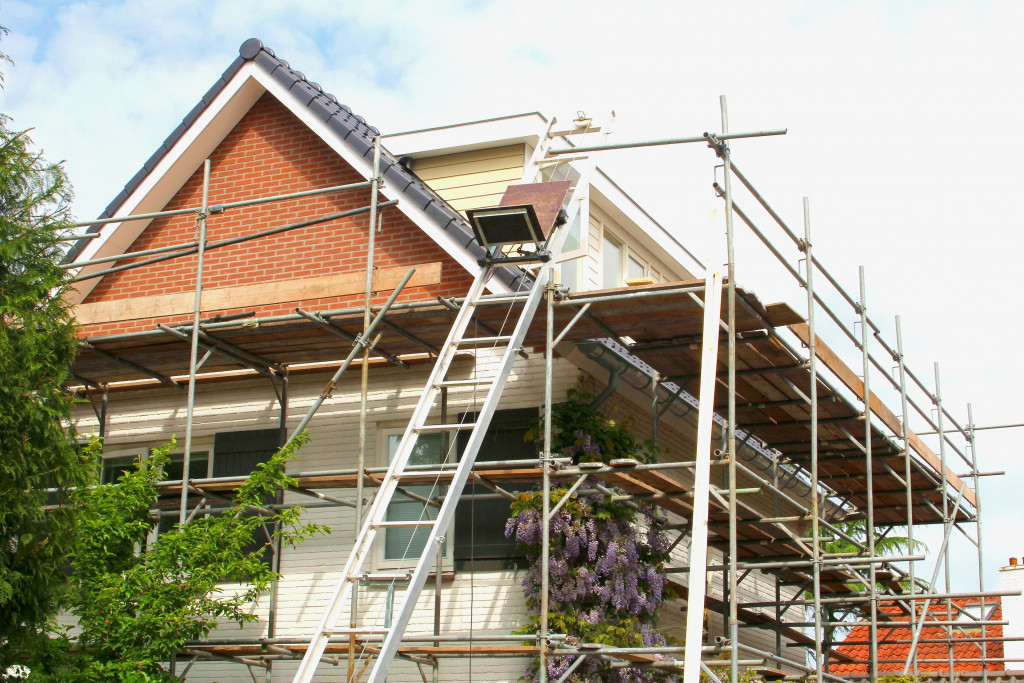From intense sunlight to battering rainfall, the exterior of a home can take a severe beating due to the harsh outdoor conditions. Although most people are only concerned with the aesthetic value of their property’s exertions, safeguarding these areas is just as important as maintaining the property’s interiors. In some cases, protecting the outside of the home prevents certain issues from occurring on the inside of the home too. Sturdy and well-kept exteriors keep homeowners safe from break-ins, inclement weather, and the like.
The best defense against Mother Nature’s wrath is early preparation and regular maintenance. These handy tips will help you maintain your home’s facade and protect it from the elements so it can weather any storm.
Give the house a fresh coat of paint
A fresh coat of paint can do more for a property than just make it look great. Modern paint formulas now have the ability to protect the home from pests, weather damage, dirt, wood rot, and dust. It’s important to use high-quality paint and hire an experienced exterior painting contractor to truly maximize the benefits of a new exterior paint job.
Bring outdoor items inside before a storm
Gardening equipment, bicycles, outdoor furniture, watering cans, and other loose items left on the lawn or the driveway should be brought inside before a major hurricane or typhoon hits. These items can easily be picked up by the wind and thrown into windows, flower beds, or doors, resulting in serious damage to these areas, so it’s best to keep them inside for the time being.
Coat the house with a weatherproof varnish
Besides a new coat of paint, it’s helpful to paint over the home with a layer of protective weatherproof varnish and a UV protective sealant. These solutions act as an extra layer of protection against rain, sleet, frost, and intense sunshine in conjunction with a high-quality paint job.
Remove any debris on the roof

Dry leaves that fall on the roof tend to accumulate in the rain gutter and downspouts, clogging up pipes, and causing them to burst during the winter. They’re also a fire hazard in the summer. Meanwhile, snow on the roof can melt, enter the shingles, then freeze over, ultimately damaging the roof. It’s important to get rid of any debris that lands on the roof — particularly dry leaves and ice — by raking the roof every once in a while to get rid of them.
Seal the driveway
Small cracks in the driveway can turn into bigger cracks when they fill up with water and then freeze over during the winter. This is why it’s necessary to seal the driveway up and fill in any cracks with either gravel or cement before the cold temperatures set in.
Invest in a sprinkler
If you don’t already have a sprinkler system installed in your yard, then you should invest in one now. Sprinklers irrigate the soil during hot, arid summers, and effectively cools it down. They’re also capable of managing the presence of airborne dust. Just make sure that it doesn’t water the yard too much, or else excess water can seep into your home’s foundation and damage it.
Prune trees and shrubs
Trees can offer cooling shade from the harsh sunlight in the summer, but they can be quite hazardous during the rainy season. Strong winds and relentless rainfall can uproot even the strongest trees, which can lead to disastrous results. To prevent the worst from happening, make sure to prune or remove trees that are within striking distance of your property before a storm. Don’t forget to prune overgrown plants and shrubs that may be scratching against your walls and siding too.
Bolt down larger outdoor items
When it comes to larger outdoor items that you can’t just bring inside your home, such as a grill, storage shed, swing set, or trash can, you can secure them to the ground with bolts, anchors, or straps. This prevents them from drifting away during a strong storm either due to violent winds or flash floods.
Seal up cracks
Water, pests, and rodents can easily fit through cracks on the outside of your home. Stop them from getting inside by sealing up any cracks, holes, and gaps on the walls, windows, and doors on the exterior of your property. Do a thorough inspection of every crevice of your home and block any potential entryway that’s bigger than a dime. You can do this with wire netting, caulk, foam, or cement.
Protecting your home’s exteriors ensures its longevity. Keep these handy tips in mind when trying to safeguard your home from the elements.

